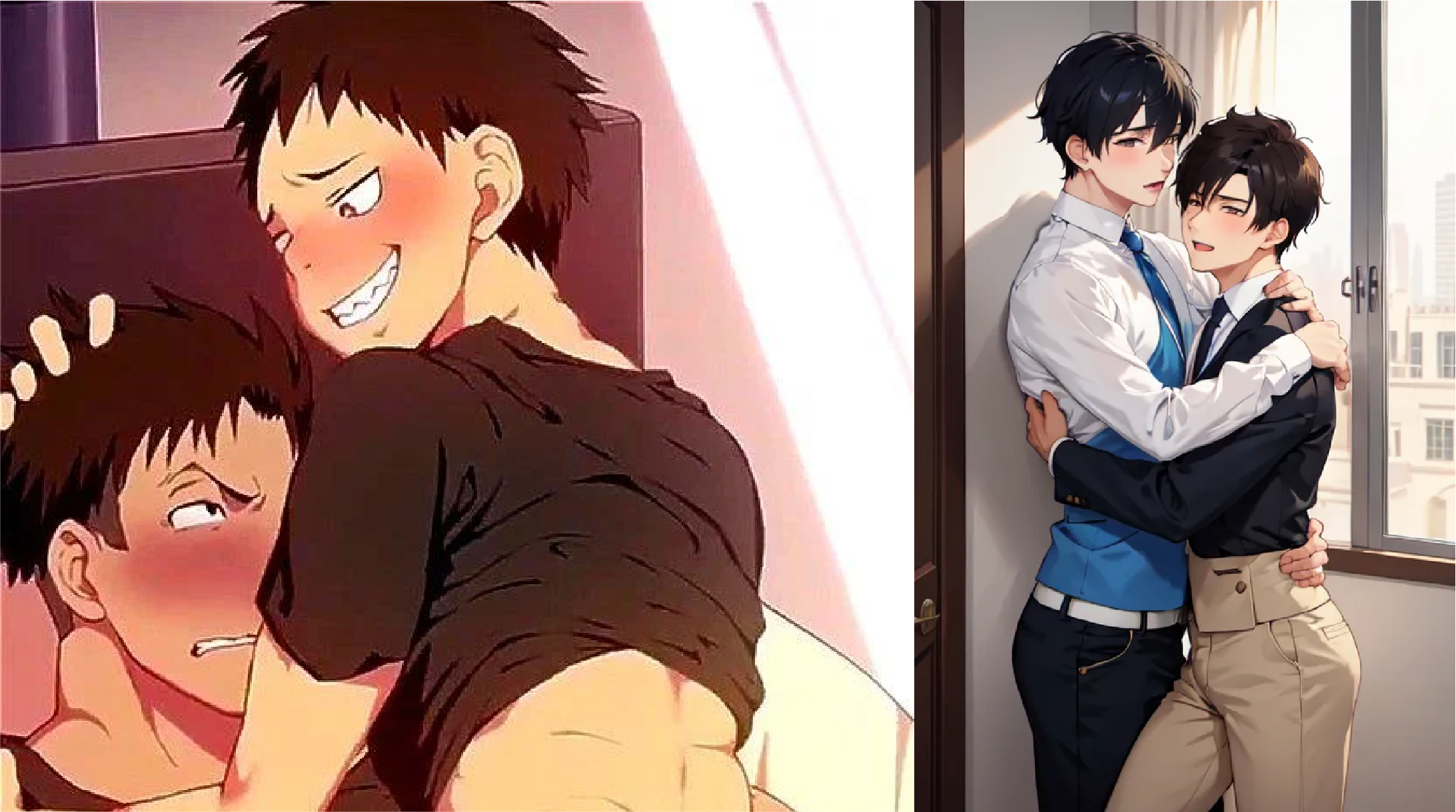The world of hentai, a genre of Japanese anime and manga that features explicit sexual content, is vast and diverse, catering to a wide range of tastes and preferences. Among the various subgenres within hentai, gay hentai has carved out its own niche, appealing to a global audience interested in male-male erotic content. This article explores the intricacies of gay hentai, examining its cultural impact, representation, and the reasons behind its growing popularity. As we delve into this unique genre, we aim to shed light on how gay hentai reflects broader themes within LGBTQ+ media and its place within the larger hentai community.
What is Gay Hentai?
Gay hentai is a subgenre of hentai that focuses on romantic and sexual relationships between male characters. Originating from Japan, where the term “hentai” refers to perverted or sexually explicit content, gay hentai has grown into a significant category within the broader hentai genre. It includes both anime and manga, with stories ranging from lighthearted romances to intense, graphic depictions of male-male intimacy.
The content within gay hentai can vary widely, from consensual relationships to more controversial scenarios. While it is primarily aimed at a male audience, it also attracts viewers and readers of all genders and sexual orientations who are interested in male-male relationships. The artwork in gay hentai is typically highly stylized, with exaggerated features and expressions that are characteristic of anime and manga.
The Appeal of Gay Hentai
One of the key reasons behind the popularity of gay hentai is its ability to provide a safe and accessible space for exploring same-sex relationships. In many parts of the world, LGBTQ+ content is still stigmatized or censored, making it difficult for individuals to find media that reflects their own experiences or interests. Gay hentai, with its wide availability online, offers a way for people to engage with male-male erotic content without facing the societal pressures or judgments that might accompany other forms of media consumption.
Another factor contributing to the appeal of gay hentai is its artistic freedom. Unlike live-action media, hentai is not bound by the limitations of reality. This allows for more imaginative and fantastical scenarios, which can be particularly appealing to those who enjoy exploring their fantasies in a medium that is both visually striking and emotionally engaging. The exaggerated expressions, intense emotions, and dramatic storylines often found in gay hentai can provide a level of escapism that is hard to find elsewhere.
Furthermore, gay hentai often features themes of power dynamics, dominance, and submission, which can be intriguing for viewers who are interested in these aspects of sexuality. The genre allows for the exploration of these themes in a way that is both safe and consensual, as the content is fictional and often far removed from real-life experiences.
Representation and Cultural Impact
Gay hentai, like many forms of LGBTQ+ media, plays a significant role in representation. For many viewers, it offers one of the few outlets where they can see same-sex relationships depicted openly and without shame. This representation is crucial in providing visibility to LGBTQ+ identities, particularly in societies where such representation is limited or non-existent.
However, it is important to note that the portrayal of gay relationships in hentai is not always accurate or respectful. Some works may reinforce harmful stereotypes or present relationships in a way that is overly fetishized. This can be problematic, especially if viewers lack access to other, more nuanced portrayals of LGBTQ+ relationships. As such, while gay hentai can be a valuable form of representation, it should be consumed with an awareness of its limitations and the context in which it is produced.
The cultural impact of gay hentai extends beyond just the LGBTQ+ community. It has influenced the broader anime and manga industries, contributing to the growing acceptance and inclusion of diverse sexual orientations in mainstream media. The popularity of gay hentai has led to increased visibility for male-male relationships in other genres, such as yaoi and boys’ love (BL), which are more focused on romance and emotional connections rather than explicit sexual content.
In Japan, where hentai and related genres have a long history, gay hentai has contributed to the ongoing dialogue about LGBTQ+ rights and representation. While Japan remains a relatively conservative society in many respects, the popularity of gay hentai and other LGBTQ+ media has helped to normalize same-sex relationships and challenge traditional views on sexuality.
The Intersection of Fantasy and Reality
One of the most fascinating aspects of gay hentai is its intersection between fantasy and reality. As a fictional genre, gay hentai allows creators and consumers to explore themes and scenarios that might be difficult or impossible to address in real life. This can be both empowering and liberating, particularly for those who feel constrained by societal norms or personal insecurities.
However, this intersection can also be complex and sometimes problematic. Because gay hentai is primarily driven by fantasy, it does not always reflect the realities of LGBTQ+ relationships. The exaggerated portrayals of masculinity, sexuality, and power dynamics in gay hentai can sometimes reinforce unrealistic expectations or misunderstandings about what it means to be in a same-sex relationship.
For viewers who are new to the genre, it is important to approach gay hentai with a critical eye and an understanding of its role as a form of entertainment rather than an accurate depiction of real-life relationships. By doing so, viewers can appreciate the genre for what it offers a space to explore fantasy and desire while also recognizing its limitations and potential pitfalls.
The Future of Gay Hentai
As society becomes more accepting of diverse sexual orientations and identities, the demand for LGBTQ+ content, including gay hentai, is likely to continue growing. This presents both opportunities and challenges for the genre. On one hand, increased visibility and demand could lead to more diverse and nuanced portrayals of same-sex relationships in hentai. On the other hand, there is a risk that the genre could become further commodified, with creators prioritizing profit over the quality and authenticity of their work.
Looking ahead, the future of gay hentai will likely be shaped by the broader cultural and social changes that are taking place around the world. As more people come to embrace LGBTQ+ identities, the genre may evolve to better reflect the complexities and realities of same-sex relationships. This could lead to a richer and more varied landscape of content, offering something for everyone, whether they are looking for romance, drama, or purely erotic material.
Conclusion
Gay hentai is a genre that offers a unique blend of fantasy, artistry, and representation. For many, it provides a valuable space to explore and engage with same-sex relationships in a way that is both accessible and imaginative. While it is not without its challenges and limitations, gay hentai has made a significant impact on the broader landscape of LGBTQ+ media and continues to be an important outlet for expression and exploration.
Read more: Exploring Jonathan Davino’s Net Worth: A Comprehensive Look at His Financial Success




